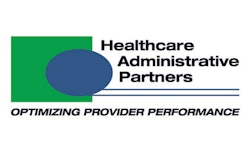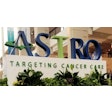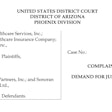
In the August 4, 2017, edition of its "Advocacy in Action eNews," the American College of Radiology (ACR) reported on an announcement from the U.S. Centers for Medicare and Medicaid Services (CMS) regarding the manual application process for a significant hardship exception under the Advancing Care Information (ACI) category of the Merit-Based Incentive Payment System (MIPS).
There are three acceptable reasons to apply for a hardship exception, which would reweight the ACI category to zero:
- Insufficient internet connectivity
- Extreme and uncontrollable circumstances
- Lack of control over certified electronic health record (EHR) technology availability
The ACR noted an important distinction for radiologists: "Hospital-based and/or nonpatient-facing MIPS-eligible clinicians are automatically reweighted by CMS, based on their special status," the organization wrote.
Therefore, most radiologists will not need to apply for a hardship exception from the ACI category of MIPS.
There are other criteria that will affect the level of reporting in MIPS under the Quality Payment Program (QPP), as listed in this table from the CMS QPP website. For an individual physician, special status is afforded under the circumstances described below.
| Circumstances for special status | |||||
| Special status | Description | ||||
| Small practice | The practice under which the clinician is billing has 15 or fewer clinicians. | ||||
| Nonpatient-facing | The clinician has 100 or fewer Medicare Part B patient-facing encounters (including Medicare telehealth services) during the nonpatient-facing determination period. | ||||
| Health Professional Shortage Areas (HPSAs) | The clinician practices in areas designated as HPSAs under the Public Health Service Act. | ||||
| Rural | The clinician practices in ZIP codes designated as rural, using the most recent Health Resources and Services Administration (HRSA) Area Health Resource File data. | ||||
| Hospital-based | The clinician furnishes 75% or more of his or her covered professional services in the inpatient hospital, on-campus outpatient hospital, or emergency room settings (based on place of service codes) during the applicable determination period. Reviews are conducted each December using claims for services in the preceding September-August year. | ||||
Physicians or groups (when reporting for MIPS as a group) who meet the following criteria will be automatically exempt from QPP reporting in 2017 and do not need to make any application:
- Clinicians/groups who bill Medicare for $30,000 or less
- Clinicians/groups who have provided care for 100 or fewer Medicare patients
- Clinicians who enroll in Medicare for the first time in 2017 (exemption still applies to the individual clinician when the practice is reporting as a group)
For radiologists who are not automatically exempt and who do not meet the requirements to apply for a hardship exception, there are many factors that go into the decision-making process to determine how to report and which measures and activities to select. Healthcare Administrative Partners is preparing a comprehensive guide that will help you make the right choices for your practice.
Carin Carlson is vice president of business development at Healthcare Administrative Partners (HAP), where she is responsible for all new business activity, including sales, marketing, product development, and strategic planning.
The comments and observations expressed herein are those of the author and do not necessarily reflect the opinions of AuntMinnie.com.


















